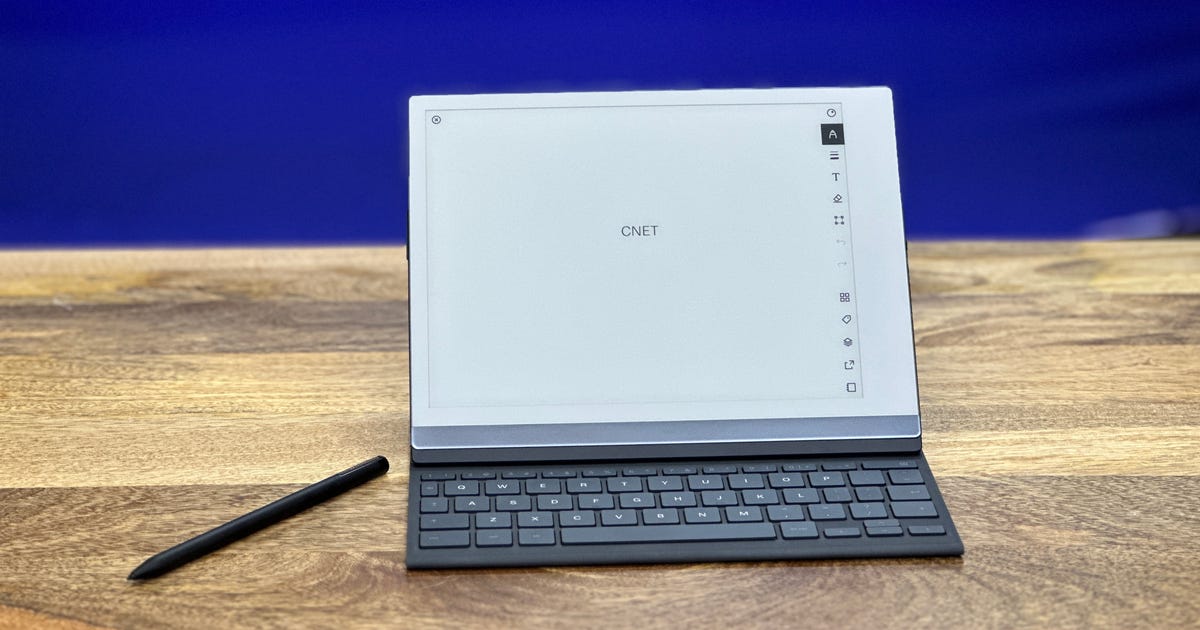
Screenshot by Nate Ralph/CNET
CUPERTINO, Calif. — When will we see a touch-screen Mac? Maybe never — at least according to Apple’s head of software.
Craig Federighi, Apple senior vice president of software engineering, told CNET after the company’s iPad and Mac launch Thursday that introducing Macs with touch screens is something Apple has no plans to do.
“We don’t think it’s the right interface, honestly,” he said. “Mac is sort of a sit-down experience.”
Federighi added that it’s awkward and uncomfortable to sit at a desk and continuously reach forward to touch a computer screen. It’s not like an iPad or iPhone that you hold in your hands and use in a “very relaxed position.”
“We’ve really focused on building the best track pads we can, something where it feels [like] your posture’s relaxed, it’s a comfortable machine to use,” he said. “And, of course, over the years we’ve experimented with all the technology, but we found it just wasn’t good. … We’re not all that interested in building one.”
Federighi made the comments following Apple’s “special event” at its headquarters in Cupertino. The company unveiled its new iPad Air 2 and iPad Mini 3 devices, as well as a high-definition, Retina 5K display iMac and an updated Mac Mini computer. Federighi also demonstrated features of Apple’s Mac OS X Yosemite software and its iOS 8.1 mobile operating system.
Apple’s lack of interest, according to Federighi, contrasts with what everyone else is doing in the computer industry. Microsoft’s Windows 8 software, released in 2012, included touch capabilities that allowed PC companies to build laptops and desktops with touch screens. Many soon rushed to do just that. Dell, Asus and other computer companies have all released touch-screen all-in-one devices similar to Apple’s iMac.
See also
- Why the larger iPad Pro is a no-show this year
- iPad Air 2, iMac Retina 5K, iPad Mini 3 and more: Here’s everything Apple announced
- CNET’s first take on the iPad Air 2
Along with the user experience, another reason Apple could be shying away from touch-screen computers is that its Mac OS X is not a touch-friendly user interface. Apple has kept the computer operating system distinct from its iOS mobile software, though features such as “Handoff” now allow the two programs to better interact.
Of course, never say never with Apple. Former CEO Steve Jobs famously trashed 7-inch tablets, saying in late 2010 that they were
and were “too big to compete with a smartphone and too small to compete with an iPad.” Apple ended up launching the 7.9-inch iPad Mini in November 2012. Jobs also spoke out against bigger-screen smartphones, but Apple introduced its 4.7-inch iPhone 6 and 5.5-inch iPhone 6 Plus last month.
There also are hopes that Apple will release a so-called iPad Pro in early 2015. The big-screen tablet is believed to sport a 12.9-inch display.
Many big businesses have scooped up hybrid devices that convert between tablets and laptops. Apple doesn’t offer such a device, and it doesn’t look like it will make a hybrid product anytime soon, not even with the iPad Pro as some had hoped. Two years ago, Apple CEO Tim Cook famously compared hybrids to combining a toaster and a refrigerator. But market watchers believe the iPad Pro will pair well with keyboards to serve as an alternative to a full-fledged computer.
Hands-on with the new Apple iPad Air 2 and iPad Mini 3 (pictures)















